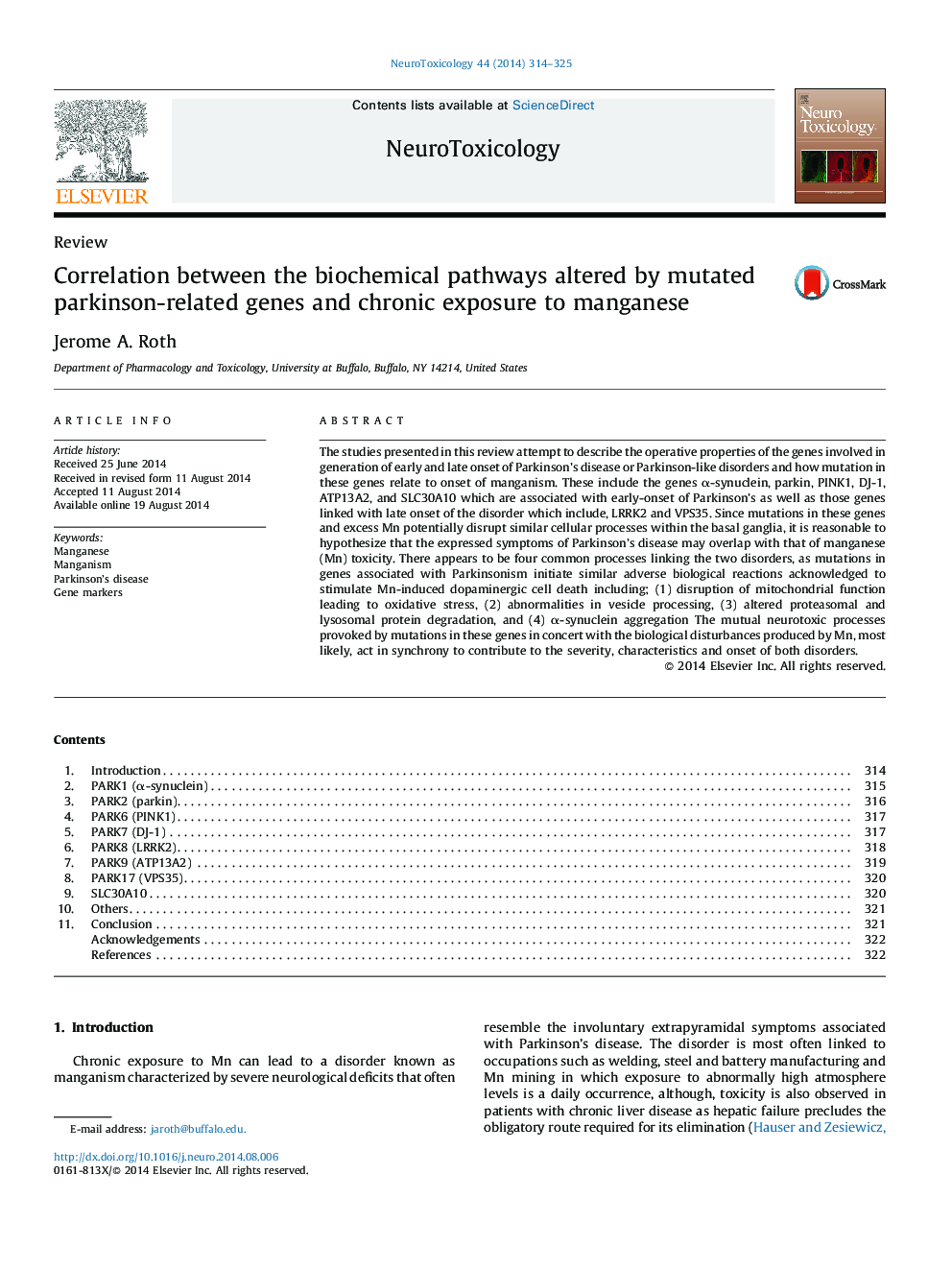| Article ID | Journal | Published Year | Pages | File Type |
|---|---|---|---|---|
| 2589685 | NeuroToxicology | 2014 | 12 Pages |
•Gene mutations promoting Parkinsonism can induce manganism.•Exposure to Mn can lead to early onset of Parkinsonism.•Parkinson-inducing gene mutations and Mn alter basal ganglia function.
The studies presented in this review attempt to describe the operative properties of the genes involved in generation of early and late onset of Parkinson's disease or Parkinson-like disorders and how mutation in these genes relate to onset of manganism. These include the genes α-synuclein, parkin, PINK1, DJ-1, ATP13A2, and SLC30A10 which are associated with early-onset of Parkinson's as well as those genes linked with late onset of the disorder which include, LRRK2 and VPS35. Since mutations in these genes and excess Mn potentially disrupt similar cellular processes within the basal ganglia, it is reasonable to hypothesize that the expressed symptoms of Parkinson's disease may overlap with that of manganese (Mn) toxicity. There appears to be four common processes linking the two disorders, as mutations in genes associated with Parkinsonism initiate similar adverse biological reactions acknowledged to stimulate Mn-induced dopaminergic cell death including; (1) disruption of mitochondrial function leading to oxidative stress, (2) abnormalities in vesicle processing, (3) altered proteasomal and lysosomal protein degradation, and (4) α-synuclein aggregation The mutual neurotoxic processes provoked by mutations in these genes in concert with the biological disturbances produced by Mn, most likely, act in synchrony to contribute to the severity, characteristics and onset of both disorders.
